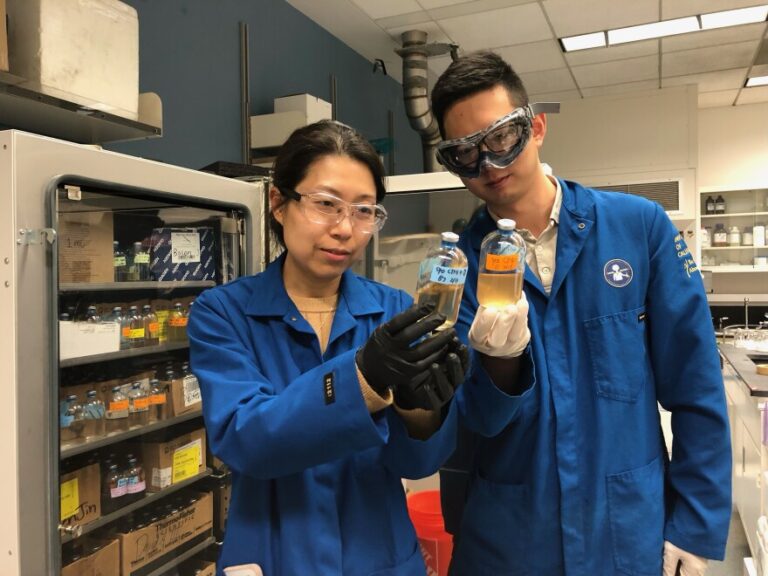Photo: University of California Riverside researchers Yujie Men and Bosen Jin have identified bacteria that’s able to break down some “forever chemicals.” This bacteria is commonly occurring in nature, which means it can easily be put into contaminated groundwater. Sizhuo Zhang / UC Riverside
There’s been a lot of concern recently about PFAS, pervasive “forever chemicals” that have seeped into waterways in the Mountain West and are difficult to remove.
But now there’s a glimmer of hope. Some researchers are finding bacteria can help clean up the chemicals, which have been linked to cancer and kidney disease.
University of California Riverside researchers identified two species of bacteria found in soil that can break down some PFAS chemicals commonly used in some electronics and medicine packaging. The findings were published in the journal Nature Water last month.
“There may be more than 10,000 different PFAS compound structures,” said Yujie Men, one of the researchers. “Not all of them can be biodegraded, and if not all, [we wanted to know] which ones may be easier for microorganisms to break down.”
Here’s the science: These PFAS chemicals have more chlorine atoms, and their carbon-chlorine bonds are easy for the bacteria to degrade. That reaction creates an unstable compound that can spontaneously degrade further, breaking down stronger bonds and destroying the PFAS altogether.
“The implication is that introducing carbon-chlorine bonds can significantly increase the biodegradability,” Men said.
These bacteria occur in nature, which means scientists could easily put those nutrients into PFAS-contaminated groundwater. To speed up the process, methanol could be injected into groundwater to promote bacterial growth and presence.
But Men said the solution only works for chlorinated PFAS chemicals. PFAS chemicals with carbon-fluorine bonds – like the ones used in firefighting foam – are too strong to be broken down by this bacteria.
“Since there are so many different PFAS structures, there’s no single bacteria that can do everything,” she said. “We need to know which type of bacteria are good at breaking down which PFAS structures…if they don’t have chlorine, sorry, I don’t have a solution for you for now.”
The research comes as the U.S. Environmental Protection Agency enforced new regulations in March to start cleaning up PFAS-contaminated groundwater across the nation.
Men said treatment and alternative design work in parallel, adding […]
Full article: www.kunc.org

